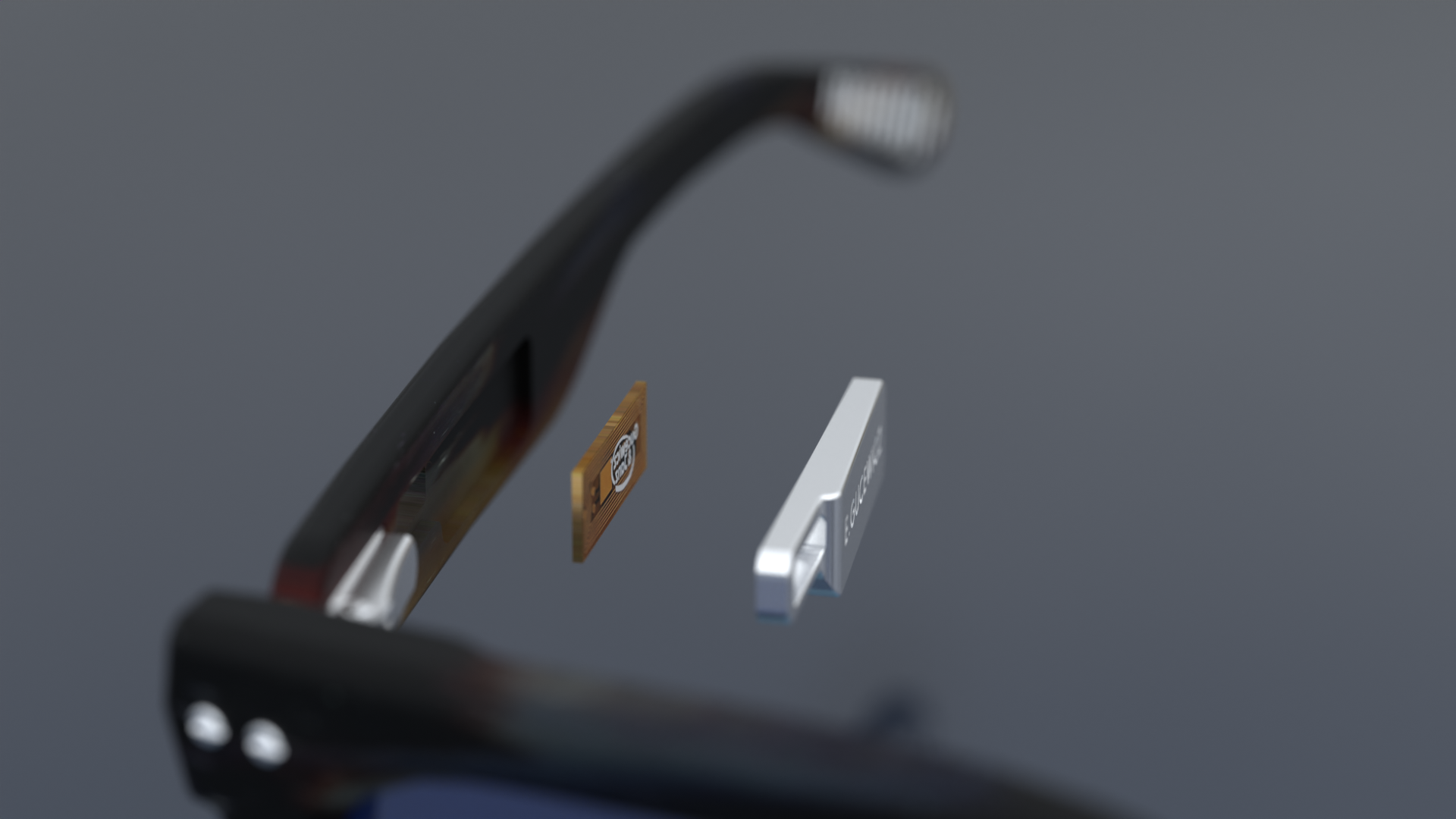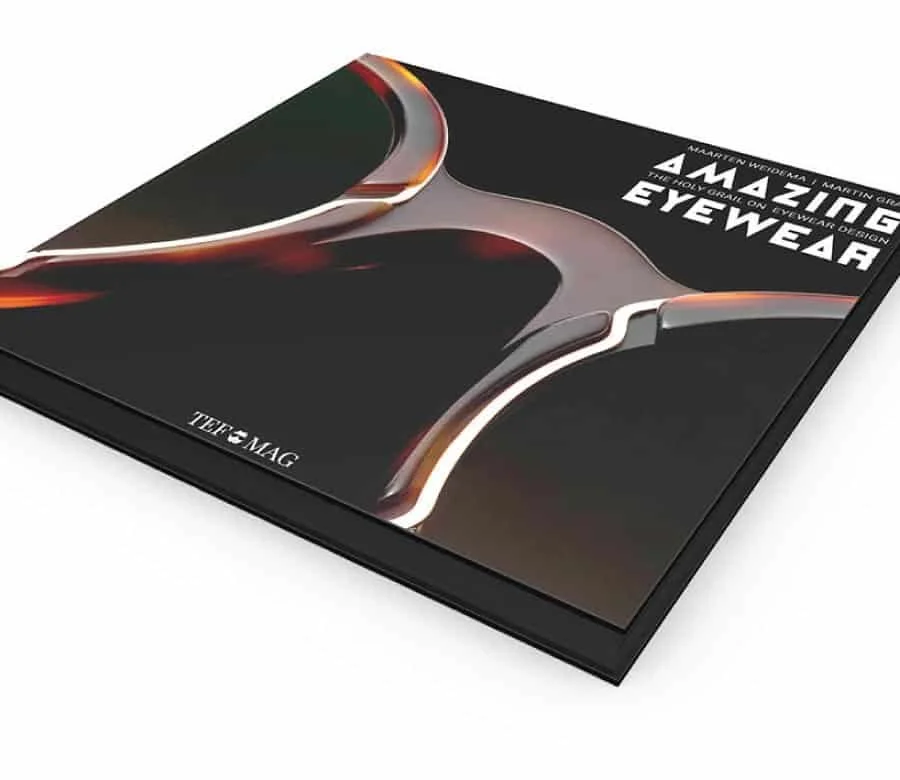AS A DESIGNER, YOU’LL KNOW THAT WHETHER YOU ARE DESIGNING INDUSTRIAL BUILDINGS OR RED CARPET DRESSES, YOU SHOULD TRY TO SET PAST AND PRESENT ASIDE, AND FOCUS ON WHERE THE FUTURE IS HEADING. Fortunately for eyewear and fashion designers like me, the future of fashion and eyewear design is genuinely exciting and full of pathways. Here are where I see some things going…
This Gentle Monster store in Shanghai pushes the boundaries of what a ‘store’ can be : From a ‘place you go to buy things’ to ‘a place of delight and experience’, immersing visitors in the brand’s culture. In hte future eyewear, fashion and other product companies will make their stores more like hang out places that are fun to visit and serve just as much to promote awareness of the brand as they are to sell their products.
We’ve got various things at play here : Perhaps the elephant in the room is additive manufacturing, new materials and basically the whole subject of technology and how it affects making. Now any designer worth their salt uses 3D modeling software and possibly owns a 3d printer or some other means of prototyping. If you are a designer and you are not working this way, you are either a 3D thinking technical genius (there are some) or you are a designer who recreates glasses no more interesting than they were 60 years ago (there are some like that too). We are told frequently that this ‘4th industrial revolution’ is underway and design and manufacture are very much a part of it. Perhaps the most significant area of development is yet to come: algorithms will auto generate glasses shapes based on the creators direction, and the outcome will likely look a lot more organic and experimental than we have ever seen.
“Algorithms will auto generate glasses shapes based on the creators direction, and the outcome will likely look a lot more organic and experimental than we have ever seen.”
Unavoidably connected to manufacture and technology is the power of ecological awareness, which has finally crawled into mainstream opinion and is shaping the industry. Customers are increasingly aware of the environmental impact of their choices and the eyewear industry has obviously caught onto this. Many brands are using so-called ‘bio acetates’ or recycled materials. In some cases, like 'bamboo-fibres' replacing the former namesake ‘Rayon’ these are just rebranded attempts of what already existed. But the customers are becoming more sophisticated with it: I’m often impressed by the increased knowledge of materials and recognition of greenwashing that non-industry people are now expressing. Attempts by brands to make themselves greener are being made. Whether firms are doing this out of a genuine act of care for the environment or just a method of increasing sales, either way it is helping clean up the eyewear industry and by proxy the fashion industry too. It can only be a good thing.
Yair Neuman, and example of genuine ecological investigative design : where eyewear frames are created from recycled lenses. [source : Yair Neuman design]
Perhaps more bizarre is the fact that retro design isn't going out of fashion. In fact this trend is apparently fully entrenched and here to stay : For the last 20 or 30 years fashion has become increasingly based on mood-board type anthologies of reference images from the past. Consistently products and advertising campaigns are romanticized retelling of stylised periods from the past. Virtually any style from any decade from the 20th century has an applicable place in current fashion. This phenomenon of obsession with the styles of previous decades as a permanent fixture is as relatively new as it is globally ubiquitous. It seems forever a 1970’s aviator will be fashionable in some parts of the world and there will be a market to support it there. People want to dip back in time, swing open the doors to a recreated fantasy experience, pick out a pair of sunglasses and wear them back out in a modern world, as companies like Jacques Marie Mage have successfully shown.
Retro insipred eyewear “JANICE GAPS (in PINK)” inspired by a pair worn by Janis Joplin in the 1960s. E.Gucewicz & Georgie Hobday collaboration. [source : Voodoo Chateau]
“People want to dip back in time, swing open the doors to a recreated fantasy experience, pick out a pair of sunglasses and wear them back out in a modern world”
But this phenomenon extends beyond just the style and look of the product. Now the nature of how things are sold and the reason people buy them is finally not because of the product's attributes : fashion has become an entertainment industry in its own right. To thrive as a purveyor of eyewear or as a fashion brand you now must offer an immersive fun experience that sufficiently captures the attention of potential customers. Anybody who has walked past a Gentle Monster store will have experienced it for themselves : At first your attention was diverted, and at some point later you have found yourself looking at one of their price tags. I’ll never forget the first time I entered a Gentle Monster store in Shanghai, I had never experienced an eyewear - or any other product- store like it : I wanted to know more, I wanted to visit every corner of the place and encouraged my friends to go afterwards. Capturing interest by offering experience is definitely how humans like to shop now, so stores are becoming more concept art spaces than a traditional shop. Successful boutiques will get used to people wandering in to just take a photo and post it on social media. Even if they’re not buying and it’s slightly inconvenient for store staff, it is afterall a form of advertising: its willingness to share and have casual access to new experiences that customers now seek.
Gentle monster store. Shanghai - Visitors who weren’t familar with the brand would be forgiven for thinking they had enetered a contemporay art exhibition.
Capturing the public's attention is obviously not limited to physical spaces. We’ve all seen the try-on eyewear filters on instagram etc. (if you are reading this on mobile, you can try this one here). We’ve also seen major brands like Gucci adopt purely digital products that your avatars can wear in metaverse spaces. It’s almost guaranteed that products like these will be NFT based soon.
In 2020, Gucci partnered with Genies - a company that enables users to make unique avatars for use in social media and messaging services- to create personalised avatars. [source : Global Cosmetic News].
“its willingness to share and have casual access to new experiences that customers now seek.”
For my own projects I’m developing eyewear with built-in microchips. When placed near your phone will allow you to access hidden stories and worlds that were created specifically for those glasses. It's the game-ification of the whole shopping and using experience, but blending the boundary between those two actions in a fun and playful way. This kind of playful interaction with customers will become so commonplace, it will be expected.
Eyewear with built-in NFC microchips. When placed near your phone will allow you to access real world experiences by opening physical locks to venues and events. [source : E.Gucewicz 2021 collection]
Another tremendous change is product presentation and packaging is no longer a mere afterthought. Employing simple, minimalist boxes and hoping that will be perceived as synonymous with chic and high quality doesn’t work anymore. I have seen tasteful and chic packaging on similar products in the eyewear and fashion industries. The overall impression is, frankly, boring. I’m not alone with this opinion as I’ve witnessed these same products subsequently fail in the market. New companies such as Los Angeles based eyewear concept brand Spec_ial, have created amusing and novel approaches to packaging. The outer boxes were designed alongside the product and capture the concept behind the collection. Packaging is now as much a part of presentation as branding: after all, it’s the product's first real chance to turn on the charm with the customer.
It’s a belief among many that the eyewear and fashion industry is on the brink of going through an incredible period of change. I appreciate any decade could be accused of making the same arrogant claim, but never have we faced such a heady confluence of playful factors : Technological revolutions, ecology affecting decisions, a dying high street yet growing consumer spending. Finally, the way we entertain ourselves has raised the standard of public expectations (that would be the envy of just 10 years ago). It’s interesting times ahead and you might want to adjust your spectacles (or their designs if applicable) because you've not seen anything yet.
The above article was published in 2021 in the book ‘Amazing Eyewear’- available here.
Thanks for reading it! If you have any further thoughts on this and to discuss more - or wish to challenge any of my opinions - I will be delighted to discuss more!
I love it when readers message me to talk further on subjects - So don't be shy if you disagree or want to tell me about something I missed. (link in menu) or contact me here!










